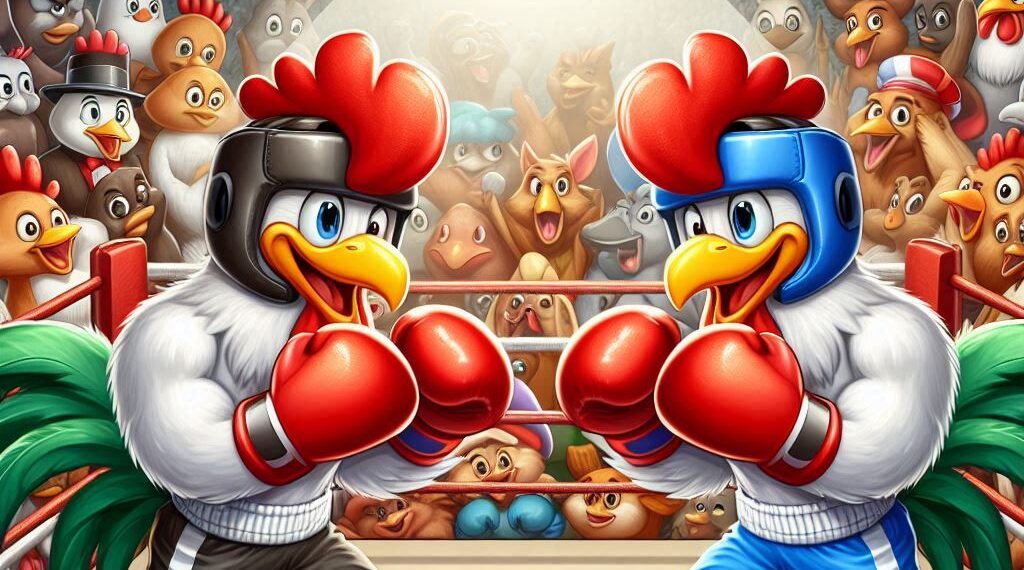
Modern Techniques in Sabong Training
First and foremost, let’s look at the new techniques trainers are adopting. While basic conditioning remains the same, these methods are more refined.
Holistic Health Approach
Today’s trainers recognize that the overall well-being of their birds significantly impacts performance. The holistic approach focuses on addressing the bird’s physical, mental, and nutritional needs to ensure peak condition.
A balanced diet is fundamental to this approach. Trainers provide their birds with diets rich in protein, vitamins, and minerals, essential for maintaining energy levels, muscle development, and overall health. High-quality grains, seeds, and specific protein sources are meticulously selected to meet these dietary requirements.
Many trainers are now incorporating natural supplements to further enhance their birds’ health. Herbal extracts and probiotics are becoming increasingly popular for their benefits. Herbal extracts can help reduce stress and inflammation, promoting better mental and physical health. Probiotics are crucial for maintaining gut health, aiding in digestion, and boosting the immune system. A healthy gut is vital for nutrient absorption and overall vitality, making probiotics a key component of the holistic health strategy.
Mental stimulation and stress management are integral parts of this approach. Birds are provided with ample opportunities for physical exercise and mental engagement. Regular training sessions, varied routines, and interactive environments help keep the birds mentally sharp and physically fit.
Structured regimens tailored to individual birds are becoming common. These include specific drills to improve speed, agility, and endurance. Techniques like interval training, a mix of high-intensity workouts followed by resting periods, are gaining popularity. They mimic the actual fight conditions, helping birds build stamina and resilience.
Understanding bird behavior has become an essential part of sabong training. Trainers use positive reinforcement techniques to train birds, helping them develop a fighting spirit while ensuring they remain manageable. This psychological aspect of training ensures that the birds are not only physically prepared but mentally sharp and confident.
Tools in Modern Training
Innovations in training tools have made it easier for trainers to streamline their training process, monitor progress, and ensure their birds are in peak condition.
Modern training gloves are designed to fit comfortably and securely on the bird’s legs, preventing injury during sparring sessions. These gloves are made from lightweight yet durable materials and sometimes feature built-in sensors that monitor force and frequency of hits, offering real-time feedback.
Electronic conditioning systems have revolutionized the way birds are trained. These systems can be programmed to vary the levels of resistance and difficulty, mimicking different fighting scenarios. They are particularly useful in endurance training, helping birds to build muscle strength and improve response times.
Technology has enabled the development of health monitoring devices specifically for gamefowl. Wearable sensors can track vital signs such as heart rate and body temperature, offering real-time health insights. These gadgets alert trainers to any potential issues before they become serious, ensuring birds remain in top fighting condition.
Innovative Technologies Enhancing Training
Technological advancements are not just limited to tools and techniques. Emerging technologies are bringing new dimensions to sabong training, making it more precise and science-backed.
Genetic profiling is a game-changer in breeding and training. By analyzing a bird’s DNA, trainers can understand their genetic strengths and weaknesses. This information helps in selecting the best breeding pairs, thus improving the overall quality of the birds. Moreover, genetic insights can guide customized training programs to enhance the bird’s innate abilities.
Virtual Reality is making its way into sabong training arenas. VR simulations allow birds to experience immersive fighting environments without physical contact. These simulations can replicate different fighting styles and techniques, helping birds prepare mentally and physically for real matches.
Artificial Intelligence (AI) is revolutionizing the way trainers approach their birds’ training. By leveraging AI, trainers can gain data-driven insights that were previously unattainable. AI systems can analyze a bird’s performance data over time, identifying patterns and suggesting areas for improvement. This technology enables trainers to pinpoint specific strengths and weaknesses in a bird’s performance.
The actionable insights provided by AI allow trainers to tailor their training techniques to each bird’s unique needs. For example, if the AI identifies a decline in endurance during matches, trainers can adjust the bird’s exercise regimen to focus on stamina building. Similarly, if the AI detects areas where the bird excels, trainers can further hone those skills to create a competitive edge.
The Future of Sabong Training
The integration of science and technology into sabong training is merely the beginning. As research continues and technology advances, the ways in which we can train and enhance the performance of gamefowl will undoubtedly evolve. Imagine neurofeedback systems that can directly train a bird’s response mechanisms or drone-assisted monitoring to provide comprehensive data during a sparring session.
As sabong continues to modernize, there’s also a growing awareness of the ethical treatment of gamefowl. Ensuring the health and humane treatment of birds is becoming a priority for many trainers. The innovations in training are not just about improving performance but also about creating a more ethical and sustainable approach to the sport.
Keep oneself updated with the latest developments in the field of sabong training. Networking with fellow trainers, attending seminars and workshops, and staying updated with recent publications in veterinary sciences and animal behavior can significantly benefit any trainer.
